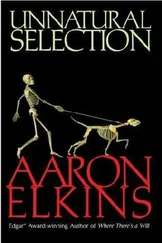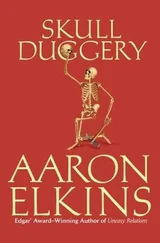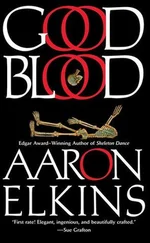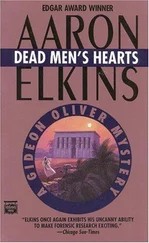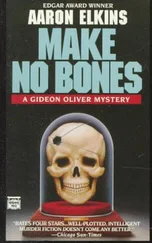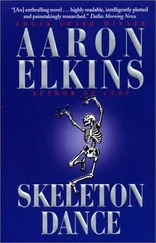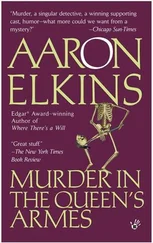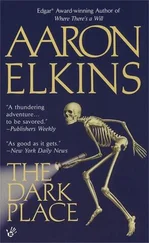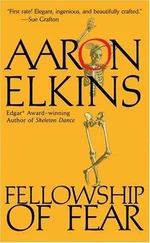John raised both hands to profess innocence of intent, and Rocco got back to work unloading and laying out the bones.
The two-and-a-half-day forensic anthropology seminar was midway through its second day, so there had been time for only a few hours of training in the basics of bone identification. Nevertheless, they did pretty well. Gideon was pleased; apparently they’d been paying attention, and perhaps had even gone so far as to study the handout materials in the evenings. Inside of fifteen minutes, they had what was left of the skeleton laid out on its back: skull, mandible, pelvis, scapulas, vertebral column, arm and leg bones, one collarbone, and most of the ribs. The hands, right foot, left collarbone, and some of the vertebrae were missing, probably carried off by carnivores, and the facial skeleton, mandible, and leg bones had been gnawed. The bones of the left foot—un-gnawed—were in a clasp envelope, with “bones found in left shoe” written on it in Italian. Gideon told them not to worry about identifying those individually. (Distinguishing between the five metatarsals and fourteen phalanges of the human foot—let alone telling left from right, and distinguishing the metatarsals of the foot from the metacarpals of the hand—took a lot more than a few hours’ training.) There were also a lot of broken fragments, most of which the group had correctly identified as crumbling chunks of vertebrae.
“How’d we do?” they wanted to know.
“You did a good job,” Gideon said, surveying the result.
“You mean we even got the ribs right? Amazing.”
“Don’t be amazed. I said ‘good,’ not ‘perfect.’ You didn’t get them all.” He did some deft, rapid rearranging while he spoke. “This goes here, this goes here, this goes . . . here. And you got the clavicle upside down and backward—and on the wrong side. It goes here, like this. And the fibulas are on the wrong sides too. But look,” he said, responding to the grumbles and the accusatory Didn’t I tell you that s that fluttered around the group, “you’re cops, not anthropologists. No reason for you to know all that. I don’t care if you can’t tell a right clavicle from a left clavicle or which side goes up, I’d just like you to be able to say that’s what it is when you see one lying out in the woods—a clavicle, a human clavicle, and not some bone from a rabbit or a fox. The forensic specialists can take it from there. So I’m telling you: you did well.”
A final look at the arrangement and a nod of approval. “Okay, we know this is a female because Rocco told us so yesterday. But you should be able to tell even without that. Anyone care to tell me how? We talked about it in yesterday’s session.”
Among others, John raised his hand, but Gideon called on a ruddy-cheeked Swiss oberstleutnant whose hand had shot up before the question had been finished. Helmut Waldbaum was a good, eager student, but his English, while more than sufficient for him to understand things, was close to impenetrable.
He grinned when Gideon called on him. “Za ghrule oaff tzoom,” he said proudly.
Gideon, who had gotten used to the accent, nodded. “Right. The rule of thumb.”
This referred to the fastest and simplest approach to sexing a skeleton, and a fairly reliable one, although not so reliable as was once thought. What you did was to place your thumb—or imagine placing your thumb—into the sciatic notch, the indentation that separated the ilium of the pelvis from the pubis (the upper from the lower half). If it was so narrow that the fit was snug, then it was a male you were looking at. But a female’s sciatic notch was wider, with plenty of wiggle room. Often you could fit two fingers into the notch.
“Now here’s something interesting to think about: why would this particular difference between the sexes exist? And once again, natural selection provides the answer. Since childbearing requires more of a bowl-shaped container for the growing fetus, the biomechanical forces of evolutionary development . . .” He caught himself with a laugh. “There I go again. Strike that from the record. Let’s move on.”
He turned the skull upside down again so the bottom faced up. They found themselves looking at a caved-in skull base. A good third of it—much of the rear half—had been thrust a half inch inward (upward in a person standing erect), cracking a ragged-edged disk of bone two to three inches in diameter. In the center of the disk, as in the center of a CD, was a smooth-rimmed hole, the foramen magnum, the opening through which the spinal cord emerges from the brain.
“Is this another depressed fracture?” someone asked, fingering the collapsed bone. “Only this one goes the right way, pushed in, not out.”
“Right,” Gideon said.
“But that’s huge,” Rocco said. “What the hell caused that?”
“You don’t know?” Gideon asked.
“No, I don’t,” Rocco said defensively. “Look, I never actually saw the skull before, all cleaned up like this.”
“But your medico’s report didn’t say?”
Rocco shrugged. “It said a lot of the bones were busted. Was I supposed to memorize them or something?”
“Hey, relax, Rocco. I just thought he might have made a special point about it.”
“Well, he didn’t.”
“Then he missed something pretty significant,” Gideon said, laying the skull back on the table. “This is what is known as a basilar ring fracture. It’s not very common, and it tells us something important about what exactly happened here.”
“What?” asked someone.
“Well, let me give you a chance to figure the whole thing out for yourselves first. It’d be a better exercise if we didn’t know what the circumstances were and what had actually happened, but Rocco’s already told us, so—”
“No, he told us what the Carabinieri concluded had happened,” somebody said archly. “That’s a different thing.”
Rocco pulled a face. “Thanks a lot, pal.”
“Actually, that’s a good way to look at this whole exercise, if you like,” Gideon said. “Your job is to review the police findings on these bones and see if you agree or disagree. Murder-suicide, both deaths by gunshot, and so on—did they get it right? And just concentrate on the trauma, don’t worry about the other things we’ve talked about—race, age, occupational indicators, height—just the trauma. I’ll give you”—he looked at his watch—“twenty minutes, plus another five minutes to write up your report on the dry-marker board over there.”
“What if we all don’t agree?” someone asked.
“Then indicate that in the report. Okay, folks, the clock is running. Better get on with it.”
While John and the others went to work, Gideon and Rocco sat on stools next to the other table, with Rocco back in a good mood and telling dumb- carabinieri jokes. Apparently there was no shortage of them.
“So this village station commander—a maresciallo , a marshal—is sitting in his car, and he calls one of his carabinieri over. ‘Martino, take a look at my rear turn lights, will you, and tell me if they’re working right.’ The carabiniere goes to the back of the car and watches, while the commander holds down the turn-indicator lever.
“‘Yes, maresciallo ,’ he says after a second, ‘they work fine. No, wait, they don’t. No, wait, they do. No, wait, they don’t. No, wait . . .’”
Gideon smiled, which encouraged Rocco. “Why do carabinieri always work in pairs?
“Beats me.”
“One to read and one to write.” Rocco laughed.
“I gather there are a lot of these?” Gideon asked.
“Millions. In real life, though,” Rocco said, turning serious, “the Carabinieri are a pretty selective outfit with some really stiff standards. Hell, my own brother applied, but they turned him down. You know why?” He waited for Gideon to bite, but Gideon wouldn’t, so Rocco supplied the answer. “He scored too high on the intelligence test.”
Читать дальше

